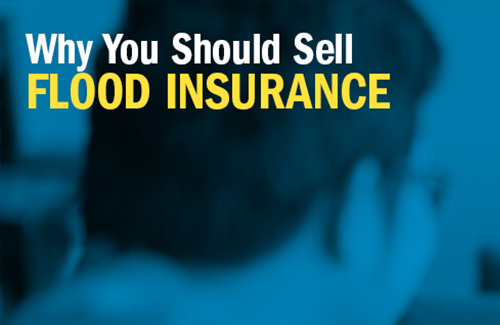Insurance agents typically serve as trusted advisors to their clients. The people you serve look to you to sell them the coverage they need. If you don’t sell flood insurance, you can’t offer them protection against the most common, and often the most costly, natural disaster. If your clients think they don’t need flood insurance, it’s important for you, as their advisor, to help them understand the importance of coverage. Below are six more important reasons for you to provide flood insurance in your community.
- Anywhere it rains, it can flood. Flooding has occurred in all 50 states and 98% of U.S. counties. Living far from an ocean or river or outside a special flood hazard area doesn’t mean that there is no risk. “Hidden” risks, such as being located downstream from a dam or burn scar area or in an urban area where storms may overwhelm an aging storm water system, are frequent flood causes. About 40% of NFIP flood claims come from outside high-risk areas.
- Protect your clients from a dangerous coverage gap. Many homeowners, renters, and business owners erroneously assume their property policies cover flood damage. No agent wants to tell clients after they’ve experienced flood damage that their properties aren’t covered.
- Build your business by helping clients. Informing people in your community of their flood risk and the financial impact of flood damage empowers them to make informed decisions about protecting their homes, businesses, and property.
- Progressively severe and unpredictable weather events are increasing flood risks for many property owners. Drought increases fire risk, in turn elevating flood risk in affected areas for years. Tropical storms and hurricanes are arriving earlier in the season, and with greater severity.
- Give your clients the best financial protection from flood damage. Some people think disaster assistance will cover all flood damage. But disaster assistance is designed to help people begin recovery, not restore their property to pre-flood status. Much disaster assistance is in the form of U.S. Small Business Administration loans, which must be paid back with interest. A FEMA disaster grant, when available, pays about $5,000 on average per household, while the average flood insurance claim payment over the past five years was about $69,000.
- NFIP is working to make it easier to quote, sell, and service flood insurance. One important change is a new pricing methodology called Risk Rating 2.0. The methodology leverages industry best practices and cutting-edge technology to enable FEMA to deliver rates that are actuarily sound, equitable, easier to understand, and better reflect a property’s flood risk.
Ready to Start Selling?
Any licensed property and casualty insurance agent can sell NFIP flood insurance, but most states require a minimum amount of flood insurance training. The Agents.FloodSmart.gov site provides a list of state requirements, and agents should also check with their state Department of Insurance to verify the latest requirements.
Agents can write flood insurance through the NFIP in two ways:
- By contracting with one of 60+ private insurance companies who participate in the NFIP Write Your Own (WYO) Program.
- By contracting to write directly with FEMA and the NFIP by signing up to write with NFIP Direct.
Get all the details on becoming a flood insurance agent at https://agents.floodsmart.gov/agents-guide/eligibility. The site provides information on NFIP’s free online training course, resources for agent professional development, and in-depth information and resources to get started selling flood insurance.

